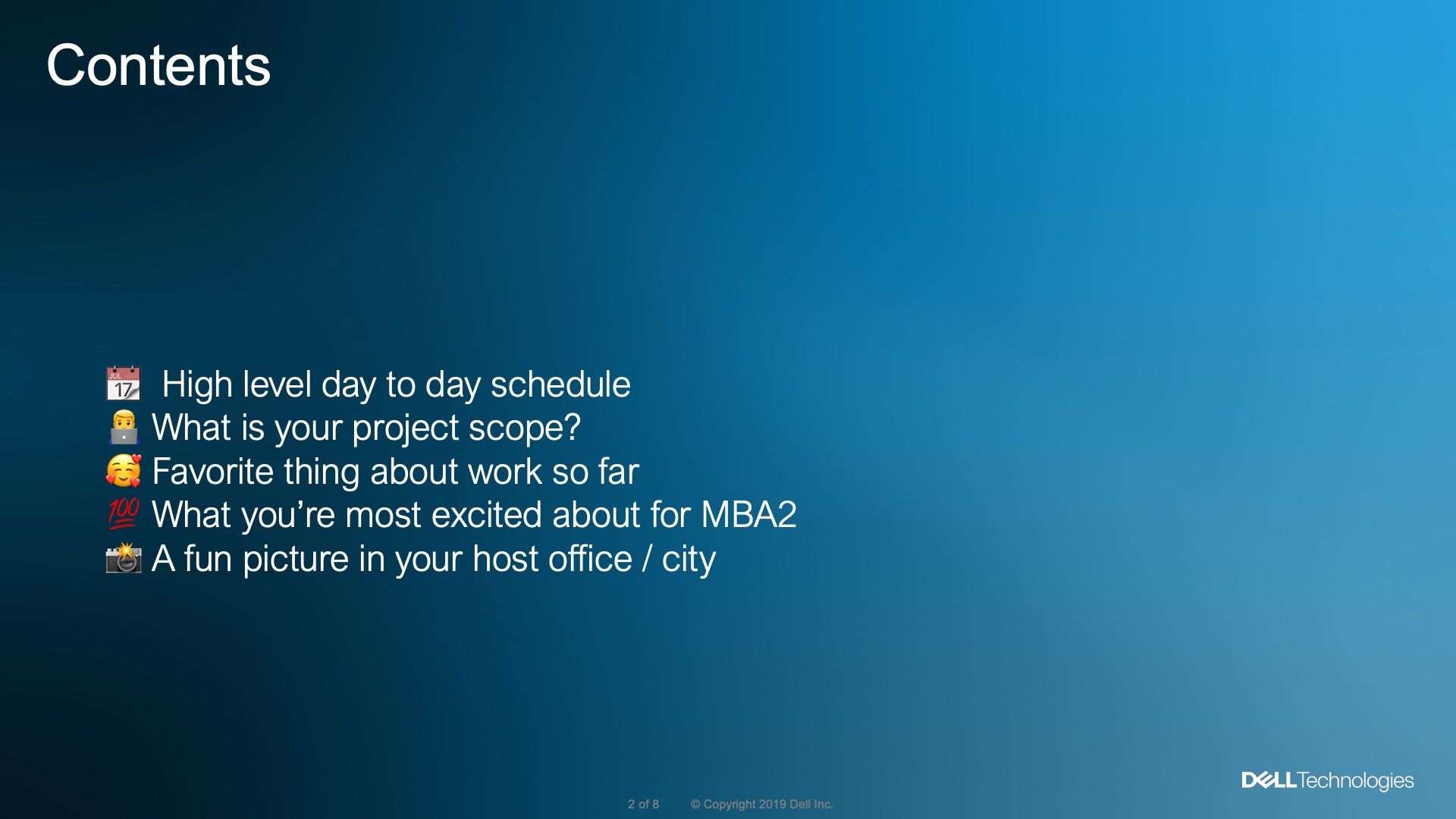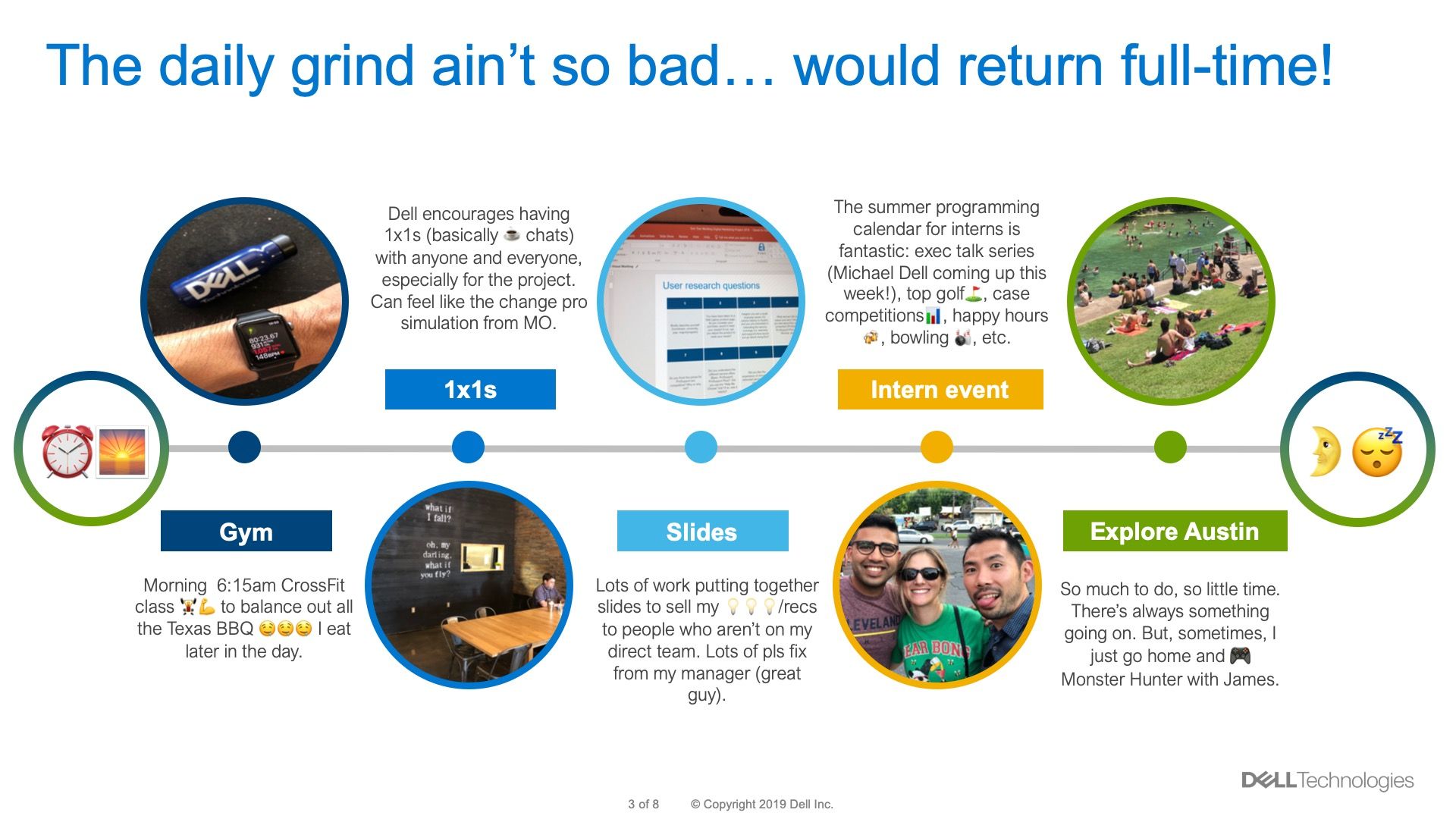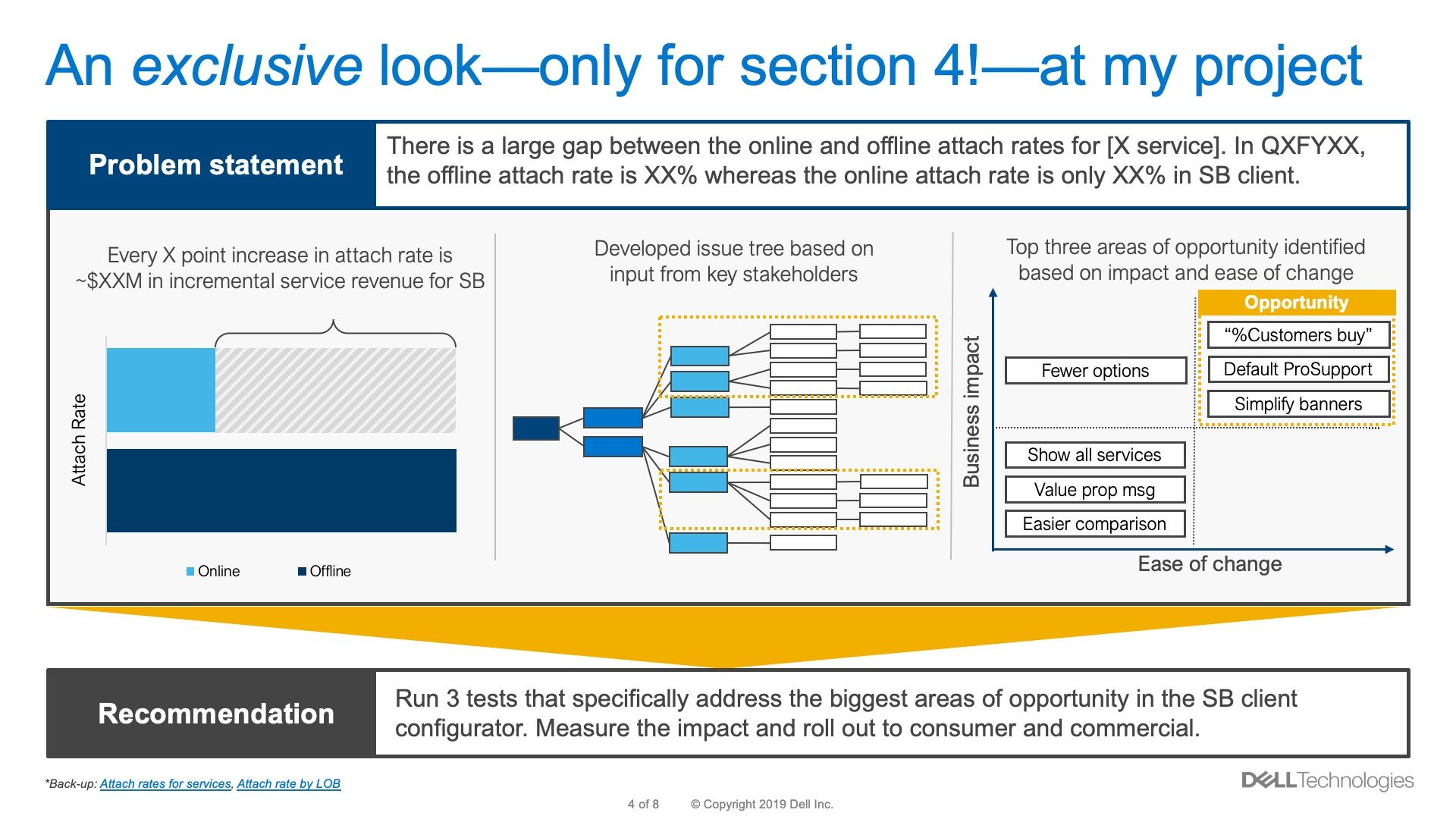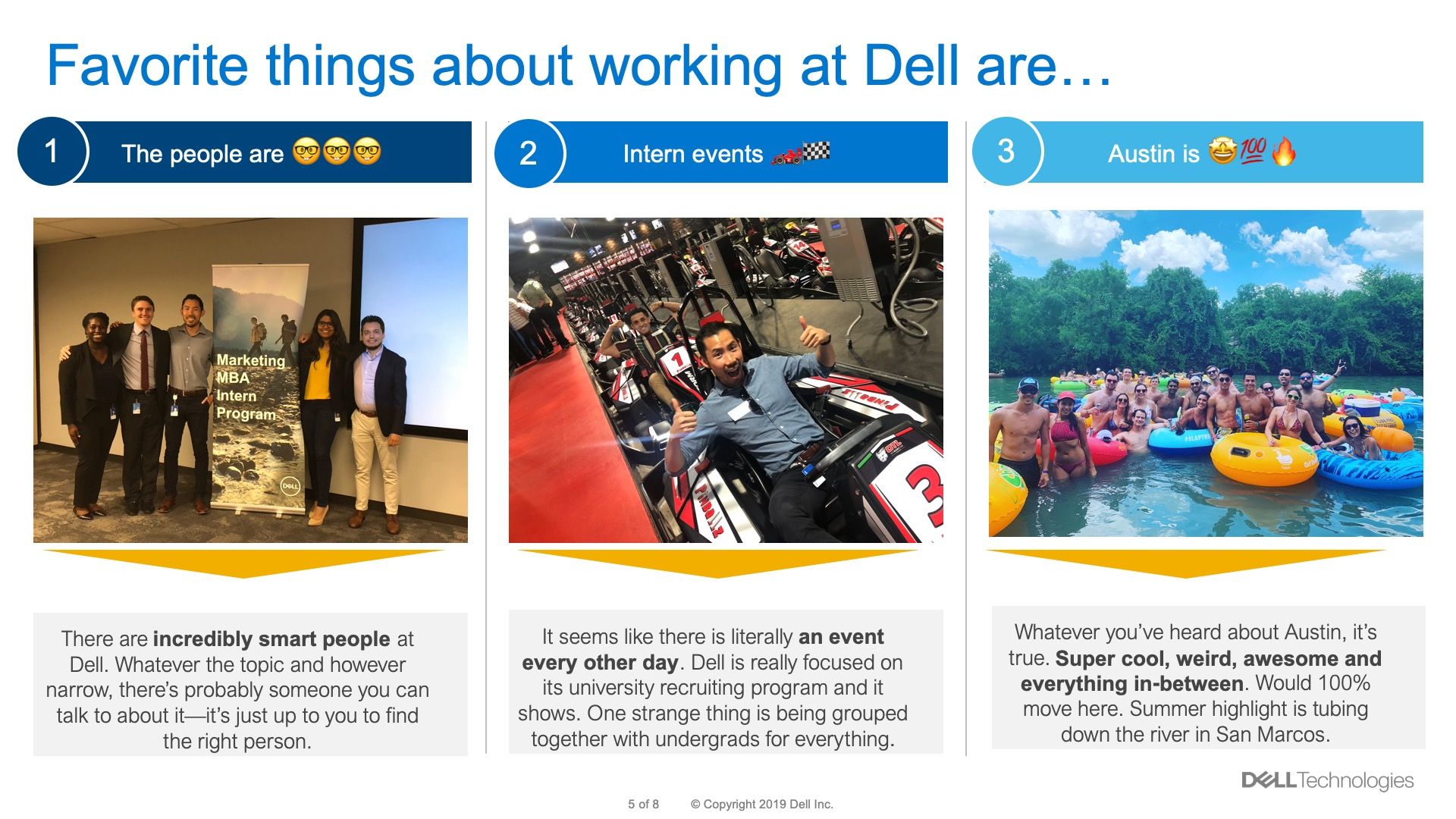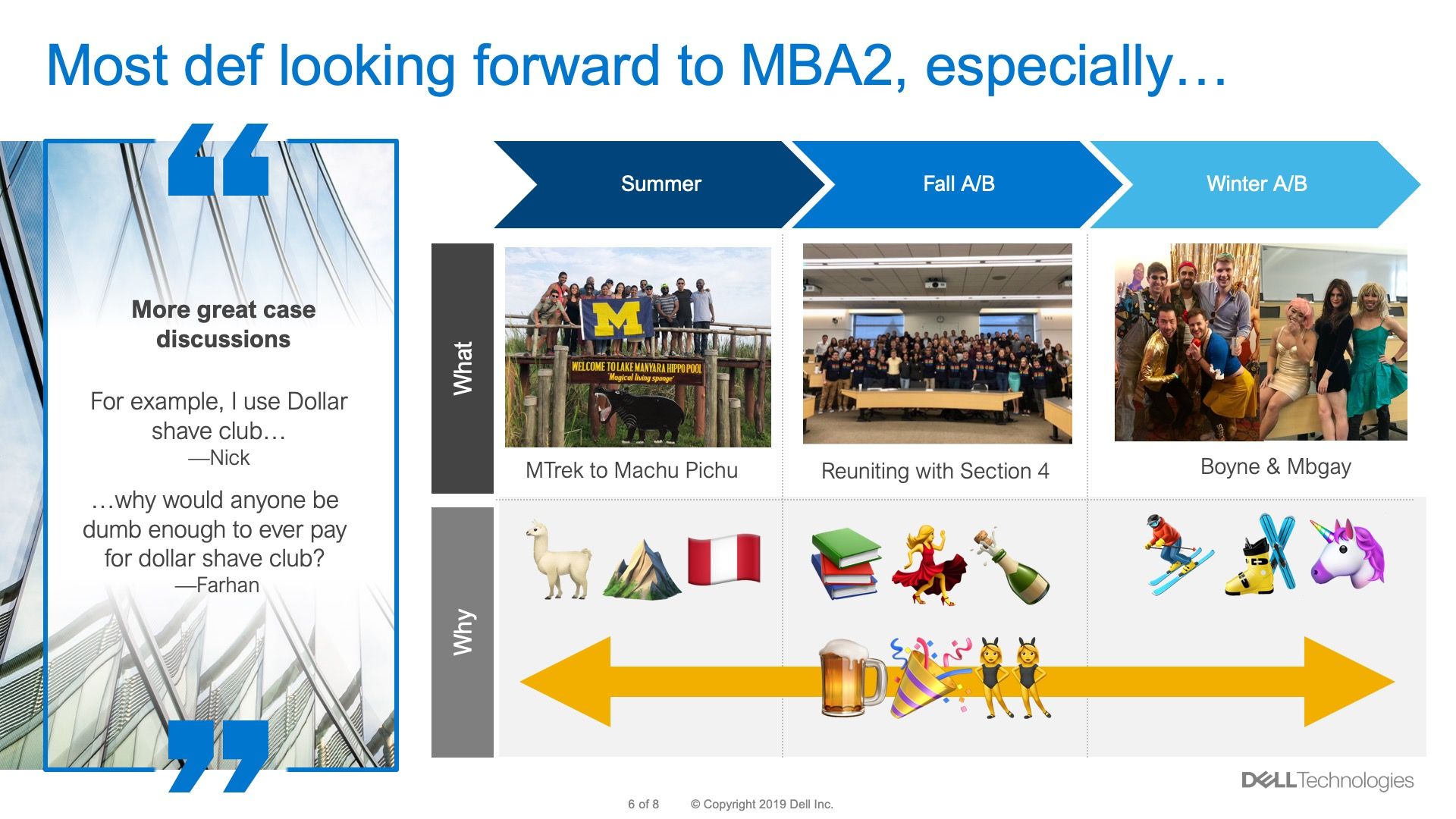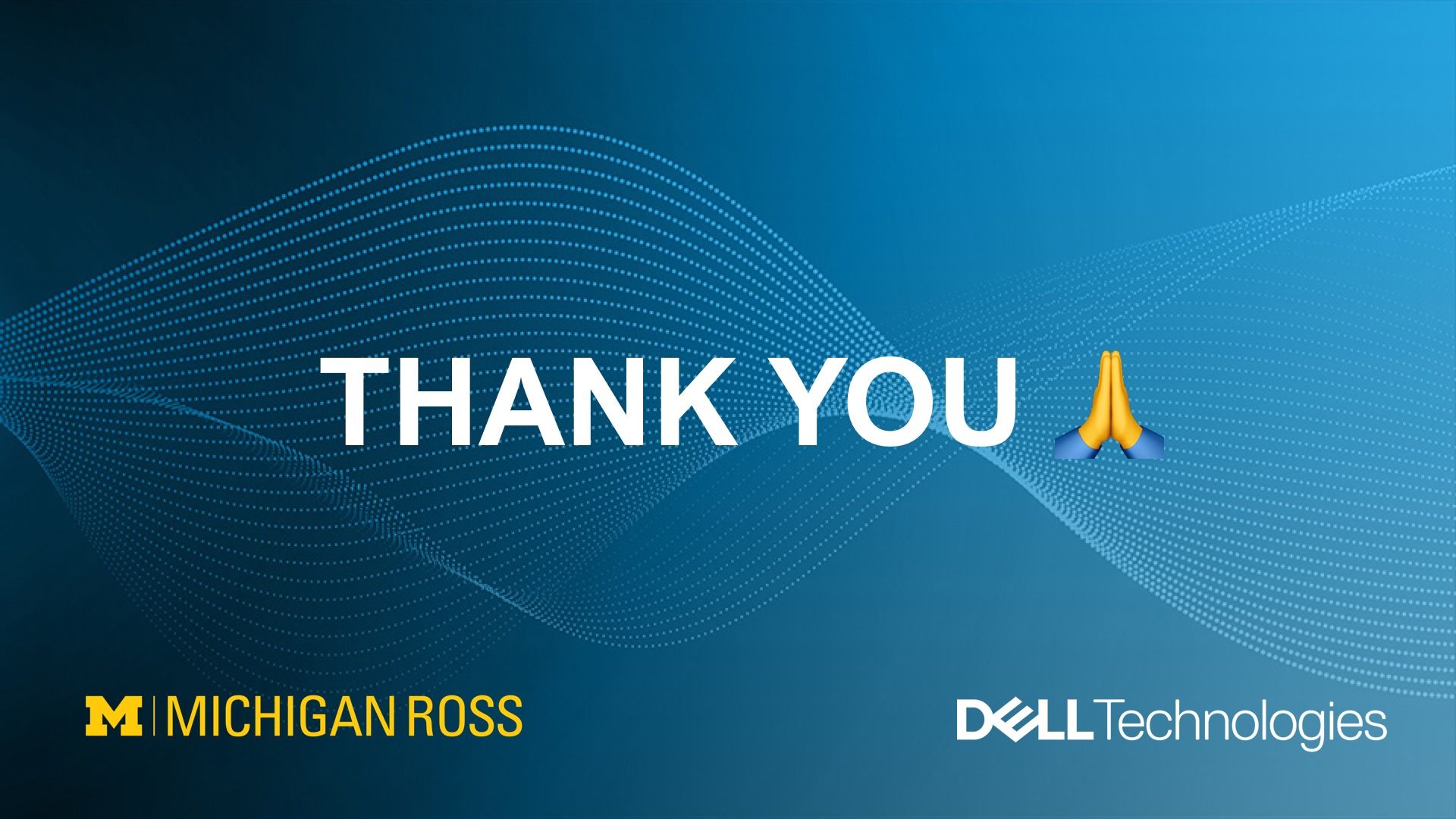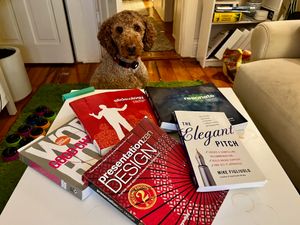🙌 🥳 Congrats on landing the Internship! What now?
Congrats! You’re an MBA intern at your dream company. You worked hard to get into an MBA program. You worked hard to recruit, network, and interview. Now comes the next step, how do you convert that summer internship into a full-time job offer? It all comes down to your (1) final project presentation, (2) the quality of the work you did during the summer, and (3) the relationships you made with the people you met and collaborated with along the way. And when I say presentation, I mean both the PowerPoint slide deck as the “deliverable” and an actual on-stage-in-front-of-a-live-audience presentation.
Not that long ago, I was a marketing MBA intern at Dell Technologies in Austin. This was one of the best summers of my life. Dell put me in corporate housing just a short drive away from downtown Austin. I had an amazing manager, Chris, who really cared about helping me succeed during my internship. And I feel in love with the city of Austin. There was always something to do and always something going on. Whether it was going out for BBQ, or tubing down the river on the weekend, or meeting up with other Michigan alumni at Happy Hour. Read to the end and I’ll share a deck that I sent to my section 4 classmates about my internship experience in Austin.
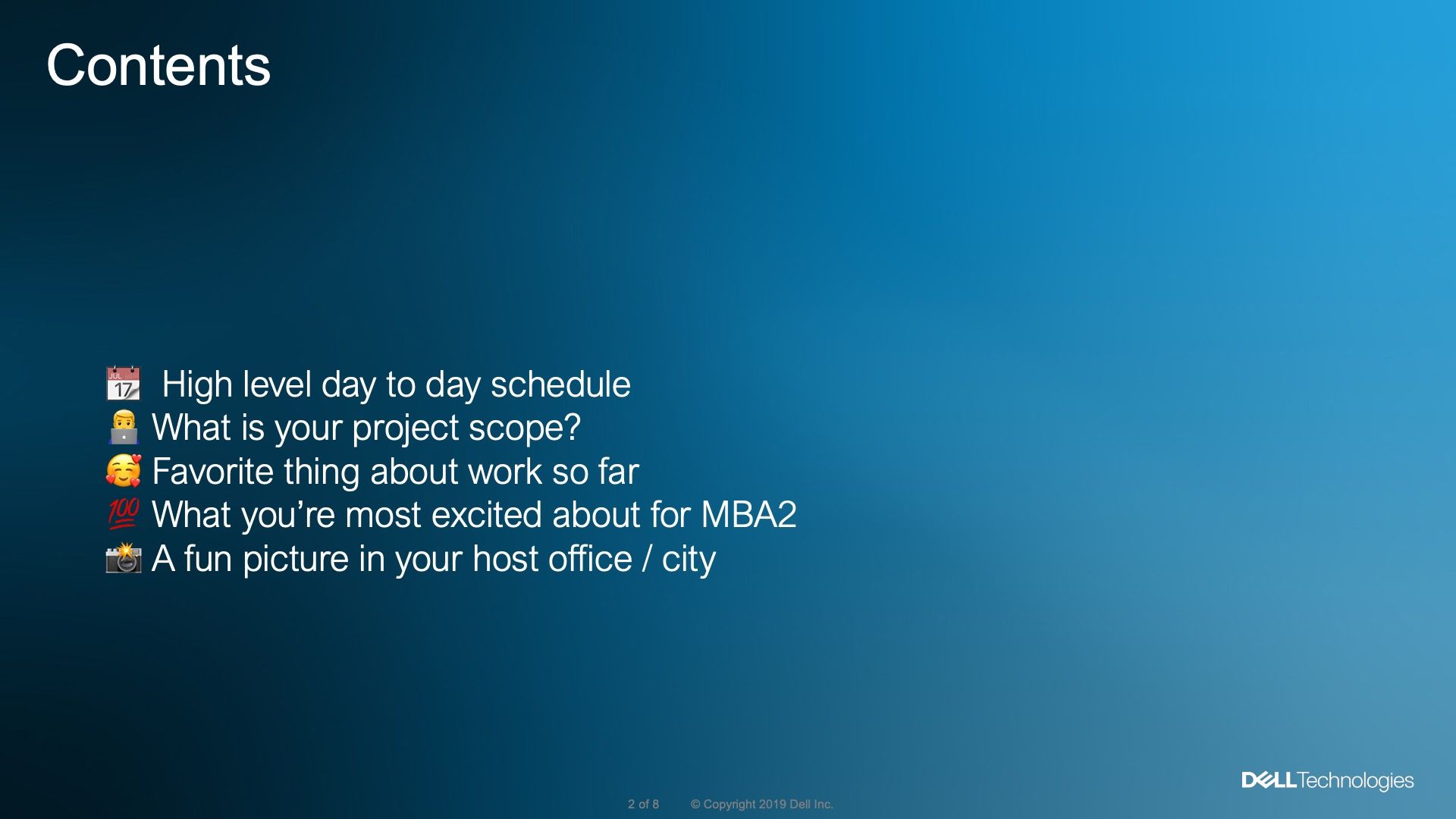
My number one goal that summer was to make sure that I delivered something that was impactful so that I could get the return offer. I got a lot of great advice from other Michigan alums. I discovered some strategies that worked for me and I was able to secure an offer to return full time. Here’s my best advice for current MBA interns who want to secure their own full-time offer.
📚✍️ Show your work early and often
This is the most important thing you can do because it invites other people to become co-creators and co-collaborators. By showing your work early and often to the right people in the org, you invite them into your creation process and because they have a chance to influence it, they will be engaged and feel as if they are part of your project. When you present your final project at the end of the summer, these folks will be your biggest cheerleaders.
As soon as you possibly can, start putting your ideas and analysis down on paper. And by paper I mean slides. It doesn’t have to be pretty. Actually, it’s better if it isn’t. What matters is that you have something you can start showing other coworkers and getting their feedback and input on. Instead of going into a 1:1 with a list of get-to-know-each-other questions, also come with a few hypothesis/ideas you want to validate or talk through. The people you will be meeting will know so much more than you so their feedback is incredibly valuable. When your slides are ugly, they will also be more open to giving you constructive feedback since it will be clear that it’s still a work in progress.
A benefit to showing your work early and asking for feedback is that it is flattering to the people you are requesting feedback from. You’ll find that most people will want to help you be successful in your project. When I was on the other side of the table as an peer buddy to summer MBA interns, I absolutely LOVED seeing what my assigned buddy was working on and giving him ideas on how to take his project to the next level.
A mistake that I’ve seen MBA interns make is keeping their work to themselves until close to the midpoint check in or until the final presentation. They want to keep their presentation under wraps and save it for the big reveal. Big mistake. Often what happens with this approach is that there are fewer opportunities for iteration and revision. What also tends to happen with this approach is that it also encourages procrastination. There are always more ways to slice the data. There’s always more industry research that can be done. All of a sudden, the mid-point check in is a few days away and there’s still an entire deck that needs to be built!
When I was at Dell, my summer project was incredibly ambiguous. Something along the lines of “improve the customer journey.” But within the first few weeks as I started to get a better idea of the business challenge, I started to put my ideas onto slides that I would show everyone from my director to the analytics team, to the marketing team working on a totally different, but related, product. Instead of just talking, I had something to show during meetings. This helped me quickly scope out my project, get access to the right data, tests hypothesis, and iterate.
🏋️♀️💪 Get your slide building reps in
If you’re new to corporate America, welcome. PowerPoint is the tool of choice. Slides are the language of business. You need to learn how to build good slides and the best way to learn is by doing. Early on, ask for examples of the best decks whether it’s from an internship project last year or a really well received recent presentation. Learn what’s expected. Then figure out how you can elevate it.
As you start to get into the data and start forming your hypothesis, start documenting the work in PowerPoint. Write down the methodology, the approach, the insights, etc. When you’re reading other decks, copy and paste slides that you want to repurpose or that you find inspiring. The more slides you make, the easier they will become. Even if some of the slides you made early on don’t make it into the final presentation, you can still include them in an “appendix” section. This is where you can show the work you did over the course of the summer. Since there’s no limit to an appendix, you can put in as many slides as you want in this section. Since the PowerPoint file will be your main “deliverable,” you will want to get credit for the work you did.
Of course, your job isn’t just to build great slides. You want to make a positive impact on the business. You want to uncover unique insights and propose recommendations that can drive measurable dollar impact. The funny thing is that to do this well, you have to persuade the right stakeholders in the org. To do that, you need to have bulletproof logic, excellent analysis, and clear recommendations—all this is usually captured in a slide deck and talked about in a meeting. The deck is where everything comes together.
The services group at Dell Technologies had this guideline for final MBA presentations. The body of the deck had to be only THREE(!) slides. An entire summer’s worth of work simplified into three slides. Four slides if you include the cover page. However, unlimited number of “back up” slides (Dell’s terminology for appendix slides). Simplifying down to three slides was hard because it forced me to make difficult tradeoffs. I could show anything I wanted to, but not everything I wanted to.
Over the course of the summer, I would estimate that I built well over two hundred slides. I re-wrote a few slides a dozen times. As I got feedback, I would revise and redesign to ensure that I was making a clear point. As my project scope evolved, some of the original slides became less relevant and were eventually cut even from the back up section. If you haven’t done this before, you might be thinking that quality matters more than quantity. I’d argue that quantity matters more than quality. What happens when you create this quantity of slides is that through these “reps” your slides will get better. The headlines will become more crisp and make more persuasive points. Your slide design will improve help you communicate more clearly. You stop becoming just a consumer of ideas and start become a producer. The real value you can create is is when you start synthesizing and producing real insights and making actionable reccomendations.
💡🤩 Find inspiration outside of your function/company/industry
One of the great things about being an MBA intern is that you haven’t been at the company long enough to know what the can and can’t be done. You may be working with folks who have been with the company for a long time and are used to seeing things done a certain way. It is very valuable to learn from these coworkers, but you can also add value by bringing in some fresh, new thinking. You can suggest new ideas that may have never been considered. Of course, it’s about finding the right balance. Pitching a TikTok campaign for at an Oil & Gas industrials manufacturer could get you points for novelty even though they might not buy it. But, given the rate of TikTok growth…. Maybe it’s not a horrible idea.
When you’re working on your summer project, think about different ways you can approach the problem. Is there an analogous situation from a different industry or from a different country that could be instructive? You may be on the marketing team, but how would the finance team approach the same problem?
Even if you’re in a sprint to that mid-point presentation/check-in, it could help to take half a day off and hit the local museum or brewery for a change of scenery. You don’t know where inspiration will strike. You’re also probably interning in a new city and so part of your internship is to really figure out if this is somewhere you could see yourself living for a few years. Sometimes, you have to get away and be in a more relaxed state in order to have those lightbulb moments.
A few months ago, I had this A-HA moment right in the middle of a CrossFit workout and developed an analogy that perfectly captures a really, really complicated marketing attribution paradox. I put it into a slide immediately and shared it; my director still talks about it and refers to it today many, many weeks later.
One practical tip for finding inspiration that can be directly applied to your slide deck. Pick up a magazine, take pictures of outdoor billboards, or screenshot any new iPhone app you’re using. Pay attention to the color, typeface, white space, imagery, angles, type treatment, etc. Steal any elements you like and copy it on to your slide. Saw a great billboard that had great use of white space and typography? See how your slide would look if you tried to apply similar white space and typography.
Conclusion
If you follow the tips I've given, the odds for getting a return offer will be in your favor. You'll have shown the team that you're a collaborator, creator, and creative. Asking people for advice and working their feedback into your project will show that you can collaborate and are open to feedback. Pushing yourself to switch from being a "consumer" (you will be innundated with new data sources and general resources) to a "producer" of actionable insights wil show that you are able to create value for the team. You will be perceived as being creative by bringing solutions from another industry/function into your role. Creativity is about mixing and matching. Combining old things into new things. It's easier than it sounds.
Good luck! You got this! If there's any other great MBA internship advice you've seen or have, please share it!
And as promised, here is my summer internship update I shared. During the summer, every week two or three classmates from my section would send out an email update on what they were doing. When it was my turn, this is what I shared:

